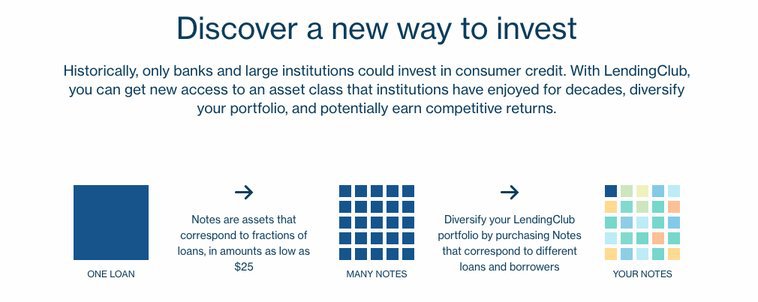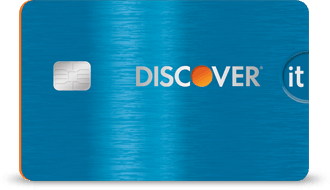7 Best Short-Term Investments for Growing Your Money
Our readers always come first
The content on DollarSprout includes links to our advertising partners. When you read our content and click on one of our partners’ links, and then decide to complete an offer — whether it’s downloading an app, opening an account, or some other action — we may earn a commission from that advertiser, at no extra cost to you.
Our ultimate goal is to educate and inform, not lure you into signing up for certain offers. Compensation from our partners may impact what products we cover and where they appear on the site, but does not have any impact on the objectivity of our reviews or advice.
You have some money to invest, but not a whole lot of time. What are the best short-term investments to maximize your returns? These short-term investments can help you make the most money with the time you have.

Our mission at DollarSprout is to help readers improve their financial lives, and we regularly partner with companies that share that same vision. If a purchase or signup is made through one of our Partners’ links, we may receive compensation for the referral. Learn more here.
You have some money to invest, but don’t like the idea of not touching the money for years or decades.
What are the best short-term investments to maximize your returns?
Most often, people in this situation are saving for a short-term goal — a down payment on a house, shiny new car, or planning for kids in the not-too-distant future.
You don’t want to leave your money sitting around in a low-interest savings account making mere pennies a month. However, you also don’t want to take on a great deal of risk since that’s money you’re planning to use in the next few years.
Short-Term High-Yield Investments
Putting your money into short-term high yield investments can be the perfect compromise between earning basically 0% interest and taking bigger risks with long-term investments. Don’t worry, I’ll explain exactly where to invest money to get good returns and also give some short-term investment examples along the way.
What Constitutes a Short-Term Investment?
When most people think of investments, they think of things like stocks, bonds, 401(k)s, and IRAs. These types of investments and investment vehicles are typically part of a long-term investment portfolio used to fund goals like saving for college funding retirement. They often mature for decades before they’re cashed in for their intended purpose.
A short-term investment, on the other hand, grows for several months to years. Once it matures, the investment can be cashed in for its full value. Therefore, if you know you’ll need your funds in the next 3-5 years or sooner, short-term investments are usually the way to go.
Are Short-Term Investments Risk-Free?
Short-term investments usually carry far less risk than long-term investments, but that does not mean that they are completely risk-free.
If you’re relying on your money being there when you need it in a few short months or years, it makes sense that you would want to take on as little risk as possible. However, even some of the best short-term investments come with some degree of risk.
That said, you can still manage your risk by choosing the right options for your situation.
As with most types of investing, the less risk you take, the less reward you will often receive.
The Best Short-Term Investment Options With High Returns
Now that we’re on the same page with what short-term investment options with high returns are and the risks involved with any investment, let’s take a look at how to start investing your money short term for the best combination of returns vs. safety.
1. Online high-interest savings accounts
Time Span: Indefinite
Return: 0-2.50% APY
When it comes to investing young, savings accounts aren’t the most lucrative option.
However, if you want access to your money at any time and to maximize your returns, high-yield online savings accounts are a great option.
Every bank offers FDIC coverage up to $250,000. As long as your account stays below that amount, you’re guaranteed access to your money even if the bank fails, which is highly unlikely.
It’s not uncommon to see some of the best savings accounts offer interest rates that are more than 5-10 times the national average. With no monthly fees and low (or no) minimum balance requirements, you can withdraw your money at any time without closing your account.
With inflation currently around 2.4%, you’ll still lose purchasing power with this short-term investment strategy (i.e. inflation is greater than your return).[1] However, you’ll still see a higher return than keeping your money in a lower-interest savings account.
Related: 15 Expert Tips for Beating Inflation
2. Money market accounts
Time Span: Indefinite
Return: 1-2%
Money market accounts are a hybrid between a checking and savings account. With a money market account, you can write checks and make withdrawals. However, you may be required to keep a higher minimum balance to keep from incurring fees.
Newly-opened money market accounts typically offer higher interest rates than savings accounts. Restrictions on the number of withdrawals allowed within a given period of time make them less liquid than a checking account but more liquid than a CD, and with comparable interest rates.
3. Certificate of deposit (CD)
Time Span: 3 months to 5 years
Return: 0.5-3%
CDs are another great option for short-term, high-yield investments.
With certificates of deposit (CDs), you give up flexibility in being able to access your funds in exchange for a higher return. CDs are essentially a loan you give to a bank. They come with a fixed interest rate and a determined maturity date, at which you’ll receive access to your original investment plus the accumulated interest.
You can still withdraw your money from a CD at any time. However, doing so will incur an early withdrawal penalty, the amount of which varies depending on the bank.
The length of CDs varies from 3 months to 5 years. The longer you’re willing to part with your money, the more interest you can earn. An online bank like CIT Bank offers some of the highest CD interest rates.
4. Take advantage of promotional deals
Cash-back rewards aren’t what most people imagine when they think of short-term investments. However, taking advantage of these promotional offers is an easy way to make money in a short period of time.
Many rewards credit cards offer a bonus of some sort when you sign up and spend a certain amount within the first three to six months. For example, the Capital One® Venture® credit card offers a 50,000-mile bonus. In order to qualify, you’ll need to spend $3,000 in the first 3 months of opening your account.
Those 50,000 miles translate to $500 in travel. Not a bad investment for minimal effort.
We don’t recommend racking up credit card debt just to collect bonuses. However, if you only use your new card for expenses you’d be paying for anyway (food, groceries, gas, utilities, etc.), and pay it off every month, then it can be a decent short-term investment opportunity.
Another promotional offer to look out for is bank account bonuses. Oftentimes, banks will offer promotions for new customers who open an account and sign up for direct deposit or deposit a specified minimum within a certain number of days.
These rewards range from $100 to $400+. Right now, Chase is offering a $350 bonus to new customers.
Qualifications include opening a checking account and setting up direct deposit ($200 bonus), opening a bank account online and depositing $10,000 of “new” dollars (not from another Chase account — $150 bonus).
5. Municipal bonds
A municipal bond is issued by a local, state, or government agency and used to complete public projects like building highways or new schools.
These short-term high-yield investments (well, depending on the bond) are backed by the government entity that issues the bond, and interest earned is usually exempt from federal taxes.
There are two types of municipal bonds: revenue or general obligation (GO). Revenue bonds are backed by a specific revenue source, such as hotel tax or toll road fees. General obligation bonds, on the other hand, are not backed by a specific project.
Although it’s possible for the issuer to default on the bond, the chances of that happening are relatively low, especially compared to corporate bonds. The risk is associated with interest rates.
When interest rates rise, the value of a municipal bond decreases. When interest rates decline, the value of a bond increases. Longer-term bonds are more susceptible to fluctuations in interest rates. Therefore, the shorter the maturity date, the less risky your investment.
One of the best investment apps on the market, Ally Invest, offers an easy and straightforward way to invest in municipal bonds.
6. Peer-to-peer lending
Time Span: 3-5 years
Average Return: 3-8% per year
Where To Invest: LendingClub
Peer-to-peer lending involves loaning money to individuals and businesses outside of the traditional banking and loan system. This is typically done through online platforms that connect borrowers with lenders. There are benefits on both sides of this equation.
Borrowers receive access to more money at lower interest rates than they may find elsewhere. Investors (you) get an alternative short-term investment strategy with competitive returns, plus the joy of knowing you’re helping fund someone else’s goals.
The way you invest with peer-to-peer lending companies is by purchasing notes, which represent a fraction of a loan. You can spread your investment over multiple notes with different loans and borrowers, thereby diversifying your portfolio and reducing risk.
Here’s how LendingClub explains it:
LendingClub offers notes as low as $25 each. That doesn’t mean you’re funding someone’s $25 loan. Rather, you’re funding a fraction of a loan in the amount of $25, and other lenders fund the rest.
According to LendingClub, 99% of its borrowers with 100+ notes see positive returns.
What makes peer-to-peer lending one of the best short-term investments is the level of ease and simplicity. LendingClub assigns a grade of A through E to each loan. As a lender, you get to choose the types of loans you want in your portfolio by either selecting one of its portfolio options or manually selecting loans.
As with any investment, the higher the risk, the greater the potential reward. Lending Club’s website cites historical returns between 3% and 8% per year.
Keep in mind that with peer-to-peer lending, your money is tied up for three to five years. If you need access to your funds sooner than that, then take a look at the other items on this list.
7. Pay off high-interest debt
Paying off high-interest debt is one of the best short-term investments you can make. I know that getting out of debt may not sound like an investment, but let’s look at the math.
Say you have a $3,000 balance on a credit card with a 20% APR. You could save around $600 in one year’s interest by paying off the balance. That’s equal to a 20% return on your investment, not to mention the years of future payments wiped clean.
If you’re concerned about the idea of parting with so much cash all at once, then consider transferring your high-interest debt to a 0% APR credit card and paying it off before the introductory interest period ends.
For example, the Discover it® card offers a 0% APR for the first 14 months. That gives you over a year to pay off your high-interest debt without accruing any more interest.
What’s the Best Way to Invest Money Short Term?
That depends on a few things. When deciding on the best way to invest money short term for your situation, consider your timeline. How long until you need your money back? If your savings goal or project is a few years out, then you may consider options like peer-to-peer lending or CDs.
If, however, you only have a few months to a year to invest, then promotional bank deals or a high-interest online savings account may be a better option. Typically, the longer the maturity of your investment, the higher the return.
Another factor to consider is the level of risk you’re willing to take on. Municipal bonds, for example, are riskier than opening an online checking or savings account. As with maturity, the greater the risk, the higher your potential return.
As you can see, short-term investing is vastly different from investing in the long term. Whichever methods you choose, you’ll want to make sure your money is easy to access and not too risky for your short-term goals.










